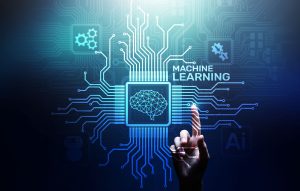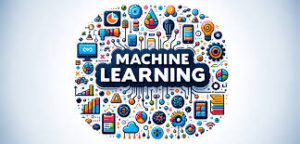Introduction: The Era of Machine Learning
Machine learning (ML) has emerged as one of the most transformative technologies of the 21st century. From powering recommendation engines to enabling self-driving cars, ML is shaping industries and redefining how we interact with technology. In this blog, we’ll dive into the basics of machine learning, explore its applications, and understand why it’s a cornerstone of modern innovation.
What is Machine Learning?
Machine learning is a subset of artificial intelligence (AI) that focuses on building systems capable of learning and improving from data without being explicitly programmed. In essence, it allows machines to identify patterns, make decisions, and predict outcomes based on data inputs.
There are three main types of machine learning:
- Supervised Learning – Learning from labeled data to make predictions.
- Unsupervised Learning – Discovering hidden patterns in unlabeled data.
- Reinforcement Learning – Learning through trial and error to achieve specific goals.
How Does Machine Learning Work?
At its core, machine learning involves feeding large volumes of data into an algorithm, training it to identify patterns, and enabling it to make predictions. Here’s a simplified step-by-step breakdown:
- Data Collection: Gather a diverse and relevant dataset.
- Data Preprocessing: Clean and prepare the data for analysis.
- Algorithm Selection: Choose a machine learning model (e.g., linear regression, decision trees, neural networks).
- Training: Teach the model using training data.
- Testing: Evaluate the model’s accuracy with test data.
- Deployment: Use the trained model for real-world applications.
Key Applications of Machine Learning
- Healthcare
Machine learning is revolutionizing healthcare by enabling early disease detection, personalized treatment plans, and efficient drug discovery. Algorithms analyze patient data to predict conditions like cancer or heart disease, improving outcomes. - Finance
Financial institutions use ML for fraud detection, risk assessment, and algorithmic trading. These systems analyze transaction patterns to flag suspicious activities and automate investment strategies. - Retail and E-commerce
From personalized recommendations to inventory management, ML drives customer engagement and operational efficiency. Examples include Amazon’s recommendation engine and dynamic pricing strategies. - Transportation
Self-driving cars, powered by ML, are a prime example of how this technology is transforming transportation. Companies like Tesla use ML to analyze sensor data and make real-time driving decisions. - Entertainment
Streaming platforms like Netflix and Spotify use ML to recommend content based on user preferences, enhancing the user experience. - Manufacturing
Machine learning optimizes supply chains, predicts equipment failures, and automates quality control processes.
Benefits of Machine Learning
- Automation
ML reduces manual intervention by automating repetitive tasks, allowing humans to focus on higher-value activities. - Improved Decision-Making
With predictive analytics, businesses can make data-driven decisions, enhancing accuracy and efficiency. - Scalability
ML systems can handle massive datasets and scale operations without a proportional increase in resources. - Personalization
From marketing campaigns to product recommendations, ML enables hyper-personalized experiences for users.

Challenges in Machine Learning
- Data Quality
Machine learning models rely heavily on high-quality data. Poor data quality can lead to inaccurate predictions and flawed decisions. - Bias and Fairness
Biased datasets can result in discriminatory outcomes, making fairness a critical concern in ML applications. - Interpretability
Many machine learning models, particularly deep learning systems, are often referred to as “black boxes” because their decision-making processes are not easily interpretable. - Cost and Resources
Training ML models can be resource-intensive, requiring significant computational power and time.
Popular Machine Learning Tools and Frameworks
- TensorFlow
Developed by Google, TensorFlow is a versatile framework for building and deploying ML models. - Scikit-learn
A Python library, Scikit-learn simplifies the implementation of basic ML algorithms. - PyTorch
Favored by researchers, PyTorch is known for its flexibility in building neural networks. - Keras
A high-level API for TensorFlow, Keras is beginner-friendly and ideal for rapid prototyping. - Amazon SageMaker
A cloud-based tool for building, training, and deploying machine learning models.
Future Trends in Machine Learning
- Edge Computing
Moving ML processing to the edge (e.g., smartphones, IoT devices) will reduce latency and enable real-time decision-making. - Explainable AI (XAI)
As ML becomes more integrated into critical applications, understanding how models make decisions will be a priority. - Federated Learning
This approach enables model training across multiple devices while maintaining data privacy, a crucial advancement for healthcare and finance. - AI-Powered Creativity
Machine learning is increasingly used in generating art, music, and even literature, blurring the lines between technology and creativity.
How to Get Started with Machine Learning
- Learn the Basics
Understand core concepts like linear regression, decision trees, and neural networks. Online courses on platforms like Coursera and edX are great starting points. - Master Programming
Proficiency in programming languages like Python or R is essential for implementing ML models. - Explore Tools and Libraries
Familiarize yourself with frameworks like TensorFlow, PyTorch, and Scikit-learn. - Practice on Datasets
Use publicly available datasets from platforms like Kaggle or UCI Machine Learning Repository to build and train models. - Stay Updated
The field of machine learning evolves rapidly. Follow industry blogs, attend webinars, and engage with online communities to stay ahead.
Conclusion
Machine learning is not just a buzzword; it’s a technology that’s transforming industries and solving complex problems. Its ability to analyze vast amounts of data and deliver actionable insights makes it indispensable in today’s digital age. Whether you’re a business owner looking to optimize operations or a tech enthusiast eager to dive into this field, now is the time to embrace the power of machine learning.
Start your journey today and become part of the revolution shaping the future of technology.

